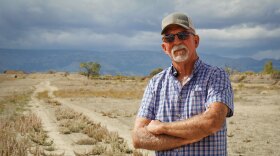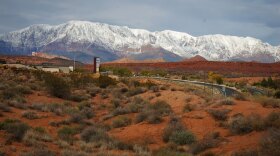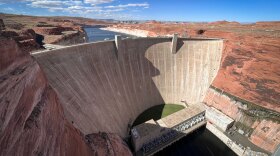-
Projects across Utah’s Colorado River Basin meant to protect water supplies and restore rivers are in a holding pattern — including a $200 million reservoir near Price, Utah.
-
“We're just trying to be proactive,” said one Carbon County farmer. “Hopefully, we can make some kind of difference in the big picture.”
-
Northern Utah has a small fraction of the snowpack it typically has this time of year. That’s bad news for ski season and water supplies.
-
Around half of Utah’s counties have met their 2030 conservation goals. Taking a closer look at who is succeeding and struggling offers a glimpse of why it’s hard to save water in Utah.
-
Utah and the 6 states that share the river missed a federal Nov. 11 deadline to make progress on a new water agreement. Gov. Katie Hobbs said she has a hard time believing the Upper Basin states can't reduce water use.
-
Because of drought, mandatory water cuts are nothing new in Utah. But the potential of large-scale reductions across the Colorado River Basin would present a steep challenge.
-
Drought and steady demand along the Colorado River are draining the nation's second-largest reservoir. Land that was once submerged is now full of beavers and thriving ecosystems.
-
October set the stage for Utah to have a solid spring snowmelt runoff. That is, if the state can catch enough snow this winter.
-
During droughts and disasters, the Washington County Water Conservancy District’s draft plan could cut up to 60% of the water cities get and leave it up to city leaders to figure out how to get by with less.
-
The water year that ended Sept. 30 was one of the driest on record for parts of the state, including Salt Lake City and St. George.
-
A group of nonprofits is calling for reductions to water demand, changes at Glen Canyon Dam and more transparent negotiations.
-
"I was a political casualty," said Ted Cooke, a longtime Arizona water manager. Some policymakers in the Upper Basin quietly expressed concern that he might favor the Lower Basin in negotiations.
Play Live Radio
Next Up:
0:00
0:00
Available On Air Stations












